Check Here How Healthy Is Your Diet and Nutrients Sources
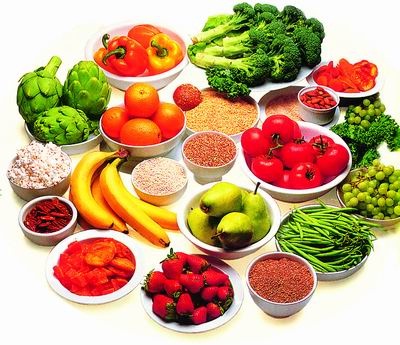
Check Here How Healthy Is Your Diet and Nutrients Sources
Check what do you eat regularly from the following lists and find what are missing in your diet; then correct the deficiency before you get sick.
If you are in a hurry, check those nutrients with fewer lines first as they are the most scarce and more frequently missed. Those with plenty of sources have less chances of being low in your diet.
It is strongly recommended to take foods instead of manufactured supplements; and limit the use of manufactured supplements to where your diet is deficient and you cannot correct it fast enough to meet the urgent needs of your body and health. (Foods are best sources of nutrients; while manufactured supplements are late second).
If you are in a hurry, check those nutrients with fewer lines first as they are the most scarce and more frequently missed. Those with plenty of sources have less chances of being low in your diet.
It is strongly recommended to take foods instead of manufactured supplements; and limit the use of manufactured supplements to where your diet is deficient and you cannot correct it fast enough to meet the urgent needs of your body and health. (Foods are best sources of nutrients; while manufactured supplements are late second).
Here are lists for 34 nutrients arranged in alphabetic order:

biotin
1- WHAT FOODS PROVIDE BIOTIN?
Swiss chard is a good source of biotin.
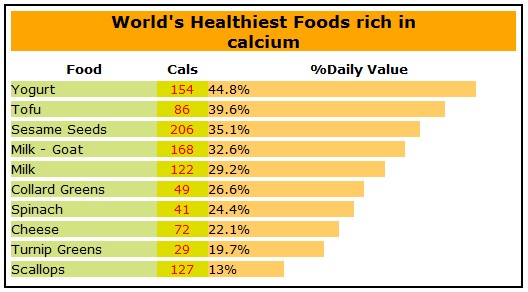
calcium
2- WHAT FOODS PROVIDE CALCIUM?
Excellent sources of calcium include spinach, turnip greens, mustard greens, collard greens and tofu.
Very good sources of calcium include blackstrap molasses, Swiss chard, yogurt, kale, mozzarella cheese, cow’s milk, and goat’s milk. Basil, thyme, dill seed, oregano, and cinnamon are also very good sources of calcium.
Good sources of calcium include romaine lettuce, celery, broccoli, sesame seeds, fennel, cabbage, summer squash, green beans, garlic, Brussel sprouts, oranges, asparagus, leeks and crimini mushrooms. Rosemary, cumin seeds, cloves, coriander seeds, scallops, and kelp (a sea vegetable) are also good sources of calcium.
Very good sources of calcium include blackstrap molasses, Swiss chard, yogurt, kale, mozzarella cheese, cow’s milk, and goat’s milk. Basil, thyme, dill seed, oregano, and cinnamon are also very good sources of calcium.
Good sources of calcium include romaine lettuce, celery, broccoli, sesame seeds, fennel, cabbage, summer squash, green beans, garlic, Brussel sprouts, oranges, asparagus, leeks and crimini mushrooms. Rosemary, cumin seeds, cloves, coriander seeds, scallops, and kelp (a sea vegetable) are also good sources of calcium.
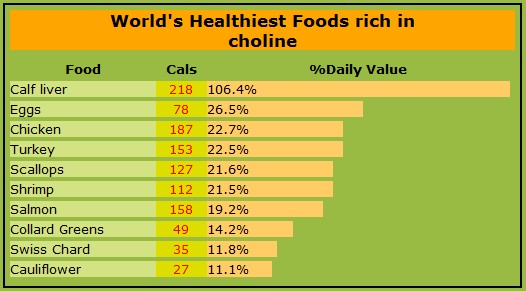
choline
3- WHAT FOODS PROVIDE CHOLINE?
The richest source of choline found in the U.S. diet comes not from a food, but from an additive called lecithin (phosphytidylcholine). Lecithin is most often added to foods as an emulsifier, that is, a substance that helps keeps food components blended together. Most of the lecithin in the U.S. food supply is derived from soybeans.
Although insufficient scientific research is available to precisely classify food sources of choline according to an “excellent, very good, and good” rating system, food sources of choline include: soybeans and soybean products, egg yolk (the word “lecithin,” comes from the Greek word lekithos meaning “egg yolk”), butter, peanuts and peanut butter, potatoes, cauliflower, tomatoes, banana, milk, oranges, lentils, oats, barley, corn, sesame seeds, flax seeds, and whole wheat bread.
Many of these foods contain not only choline itself, but also other forms of the vitamin including lecithin (phosphatidylcholine) and sphingomyelin. Ginseng root (Panax ginseng, also called American Ginseng) is also a source of choline.
Although insufficient scientific research is available to precisely classify food sources of choline according to an “excellent, very good, and good” rating system, food sources of choline include: soybeans and soybean products, egg yolk (the word “lecithin,” comes from the Greek word lekithos meaning “egg yolk”), butter, peanuts and peanut butter, potatoes, cauliflower, tomatoes, banana, milk, oranges, lentils, oats, barley, corn, sesame seeds, flax seeds, and whole wheat bread.
Many of these foods contain not only choline itself, but also other forms of the vitamin including lecithin (phosphatidylcholine) and sphingomyelin. Ginseng root (Panax ginseng, also called American Ginseng) is also a source of choline.
4- WHAT FOODS PROVIDE CHROMIUM?
Although chromium occurs naturally in a wide variety of foods, many foods contain only 1 or 2 micrograms (mcg) of chromium per serving. In addition, food processing methods often remove the naturally occurring chromium. As a result, obtaining a sufficient amount of chromium in the diet can be difficult.
Furthermore, determining the chromium content of foods is problematic due to inadequate analytical tools. Consequently, currently available food composition databases do not contain accurate information about the amount of chromium found in various foods. While our food rating system qualified romaine lettuce as an excellent source of chromium and onions and tomatoes as very good sources, the following foods are also believed to provide a significant amount of chromium: brewer’s yeast, oysters, liver, whole grains, bran cereals, and potatoes. Beer and wine can accumulate chromium during fermentation and are therefore considered to be dietary sources of the mineral.
Furthermore, determining the chromium content of foods is problematic due to inadequate analytical tools. Consequently, currently available food composition databases do not contain accurate information about the amount of chromium found in various foods. While our food rating system qualified romaine lettuce as an excellent source of chromium and onions and tomatoes as very good sources, the following foods are also believed to provide a significant amount of chromium: brewer’s yeast, oysters, liver, whole grains, bran cereals, and potatoes. Beer and wine can accumulate chromium during fermentation and are therefore considered to be dietary sources of the mineral.
5- WHAT FOODS PROVIDE COENZYME Q?
Food concentrations of coenzyme Q are not well documented. In general, however, coenzyme Q is available from three basic types of foods: (1) fish; (2) organ meats, including liver, kidney and heart; and (3) the germs of whole grains.
The most concentrated sources of coenzyme Q — like heart or kidney — contain about 2-3 milligrams of coenzyme Q per ounce of heart or kidney. The germs of grains, while containing less coenzyme Q per ounce, also contain vitamin E in amounts of 5-10 IU per ounce, and this vitamin E works together with coenzyme Q in the body.
The most concentrated sources of coenzyme Q — like heart or kidney — contain about 2-3 milligrams of coenzyme Q per ounce of heart or kidney. The germs of grains, while containing less coenzyme Q per ounce, also contain vitamin E in amounts of 5-10 IU per ounce, and this vitamin E works together with coenzyme Q in the body.
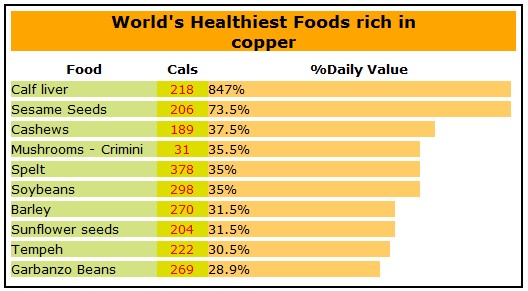
copper
6- WHAT FOODS PROVIDE COPPER?
Excellent sources of copper include asparagus, calf’s liver, crimini mushrooms, turnip greens and molasses.
Very good sources of copper include chard, spinach, sesame seeds, mustard greens, kale, shiitake mushrooms, and cashews.
Good sources of copper include eggplant, tomatoes, summer squash, winter squash, green peas, romaine lettuce, garlic, sunflower seeds, green beans, beets, fennel, olives, leeks, sweet potato, buckwheat, barley, spelt, tempeh, tofu, soybeans, miso, scallops, shrimp, walnuts, pumpkin seeds, flaxseeds, peanuts, almonds, pineapple, raspberries, lentils, garbanzo beans, lima beans, kidney beans, ginger, and black pepper.
Very good sources of copper include chard, spinach, sesame seeds, mustard greens, kale, shiitake mushrooms, and cashews.
Good sources of copper include eggplant, tomatoes, summer squash, winter squash, green peas, romaine lettuce, garlic, sunflower seeds, green beans, beets, fennel, olives, leeks, sweet potato, buckwheat, barley, spelt, tempeh, tofu, soybeans, miso, scallops, shrimp, walnuts, pumpkin seeds, flaxseeds, peanuts, almonds, pineapple, raspberries, lentils, garbanzo beans, lima beans, kidney beans, ginger, and black pepper.
7- WHAT FOODS PROVIDE CYSTEINE?
Cysteine is found in a variety of foods including poultry, yogurt, egg yolks, red peppers, garlic, onions, broccoli, Brussel sprouts, oats, and wheat germ.
8- WHAT FOODS PROVIDE ENZYMES?
Virtually all fresh, organically grown, uncooked plant foods are sources of enzymes. Bromelain is found in pineapples while papain is concentrated in unripe papayas.
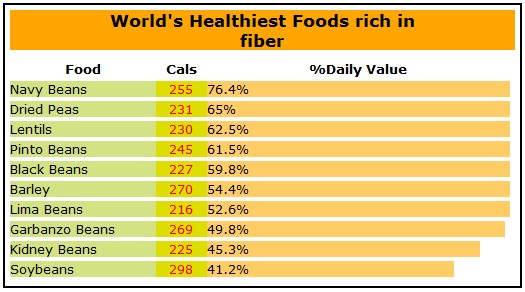
fiber, dietary
9- WHAT FOODS PROVIDE DIETARY FIBER?
Excellent food sources of fiber include turnip greens, mustard greens, collard greens, , navy beans, eggplant, raspberries, and cinnamon.
Very good sources of dietary fiber include romaine lettuce, celery, Swiss chard, spinach, fennel, asparagus, cabbage, Brussels sprouts, green beans, cauliflower, carrots, tomatoes, green peas, beets, bell peppers, broccoli, shiitake mushrooms, kale, pinto beans, black beans, kidney beans, dried peas, lentils, strawberries, pear, cranberries, strawberries, oranges, whole wheat, barley, flax seeds, coriander seeds, cloves, and oregano.
Good sources of dietary fiber include apricots, grapefruit, banana, figs, pineapple, cantaloupe, avocado, plums, papaya, kiwifruit, blueberries, apple, sweet potato, summer squash, onions, shiitake mushrooms, yam, leeks, olives, crimini mushrooms, potatoes, corn, beets, rye, buckwheat, oats, spelt, garbonzo beans, soybean, miso, sesame seeds, rosemary, black pepper, cayenne pepper, dill, and turmeric.
Very good sources of dietary fiber include romaine lettuce, celery, Swiss chard, spinach, fennel, asparagus, cabbage, Brussels sprouts, green beans, cauliflower, carrots, tomatoes, green peas, beets, bell peppers, broccoli, shiitake mushrooms, kale, pinto beans, black beans, kidney beans, dried peas, lentils, strawberries, pear, cranberries, strawberries, oranges, whole wheat, barley, flax seeds, coriander seeds, cloves, and oregano.
Good sources of dietary fiber include apricots, grapefruit, banana, figs, pineapple, cantaloupe, avocado, plums, papaya, kiwifruit, blueberries, apple, sweet potato, summer squash, onions, shiitake mushrooms, yam, leeks, olives, crimini mushrooms, potatoes, corn, beets, rye, buckwheat, oats, spelt, garbonzo beans, soybean, miso, sesame seeds, rosemary, black pepper, cayenne pepper, dill, and turmeric.
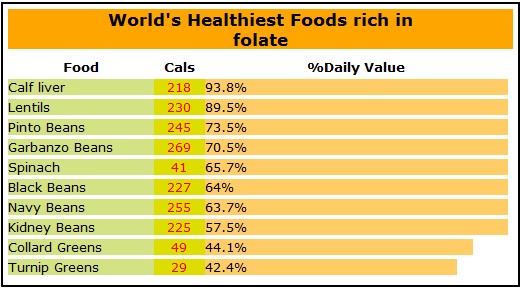
folate
10- WHAT FOODS PROVIDE FOLATE?
Excellent sources of folate include romaine lettuce, spinach, asparagus, turnip greens, mustard greens, calf’s liver, parsley, collard greens, broccoli, cauliflower, beets, and lentils.
Very good sources include summer squash, black beans, navy beans, kidney beans, pinto beans, garbanzo beans, papaya, strawberries, green beans sea vegetables, cabbage, bell peppers, Brussels sprouts, leeks, fennel, tomatoes, and green peas.
Very good sources include summer squash, black beans, navy beans, kidney beans, pinto beans, garbanzo beans, papaya, strawberries, green beans sea vegetables, cabbage, bell peppers, Brussels sprouts, leeks, fennel, tomatoes, and green peas.
11- WHAT FOODS PROVIDE FLAVONOIDS?
Virtually all fruits, vegetables, herbs and spices contain flavonoids. They are also found in other types of food, including dry beans (where they give red beans,black beans, and speckled beans their color) and grains (where the color provided by flavonoids is usually in the yellow family). Products made from the foods above (for example, wines made from grapes) also typically contain a wide variety of flavonoids.
While the flavonoid family is too complex to report all of its food connections, some highlights are especially important. In the fruit family, it is berries that come out highest in the chemical category of flavonoids called anthocyanins. Black raspberries, for example, may contain up to 100 milligrams of anthocyanins per ounce.
Green tea has flavonoid components called catechins that may reach 1,000 milligrams (or 1 gram) per cup. In general the more colorful components of the food–like the skins of fruits–contain the highest concentration of flavonoids. An exception to this rule, however, is the white pulpy inside of oranges. Unlike the watery orange-colored sections of this fruit, which contain virtually all of its vitamin C, the orange’s flavonoids are found in the white pulpy portion inside the skin and surrounding the sections.
While the flavonoid family is too complex to report all of its food connections, some highlights are especially important. In the fruit family, it is berries that come out highest in the chemical category of flavonoids called anthocyanins. Black raspberries, for example, may contain up to 100 milligrams of anthocyanins per ounce.
Green tea has flavonoid components called catechins that may reach 1,000 milligrams (or 1 gram) per cup. In general the more colorful components of the food–like the skins of fruits–contain the highest concentration of flavonoids. An exception to this rule, however, is the white pulpy inside of oranges. Unlike the watery orange-colored sections of this fruit, which contain virtually all of its vitamin C, the orange’s flavonoids are found in the white pulpy portion inside the skin and surrounding the sections.
12- WHAT FOODS PROVIDE GLUTAMINE?
Food sources of glutamine include most high-protein foods including beef, chicken, fish, beans, and dairy products.
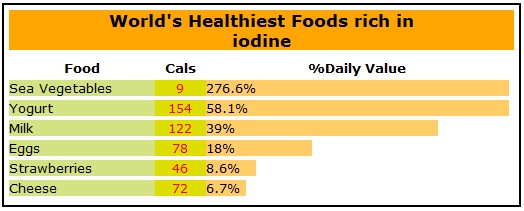
iodine
13- WHAT FOODS PROVIDE IODINE?
The amount of iodine found in most natural foods is typically quite small and varies depending on environmental factors such as the soil concentration of iodine and the use of fertilizers. Some of the richest food sources of iodine are often processed foods that contain iodized salt, and breads that contain iodate dough conditioners.
Sea vegetables are an excellent source of iodine. Yogurt, cow’s milk, eggs, and strawberries are very good sources of idone. Good sources include mozzarella cheese.
Fish and shellfish require their own special category when it comes to iodine content, because the amount of iodine they contain is not always easy to predict. For example, the amount of iodine found in fish may not match up very predictably with the amount found in their home waters, or even with their diet. Four ounces of very low iodine fish might only provide about 70 micrograms of iodine, or less than half of the adult RDA. By contrast, four ounces of very high iodine fish might contain as much as 1,000 micrograms of iodine – an amount just below the Tolerable Upper Limit (UL, or safety level) of 1,100 micrograms.
Due to the great variability in fish iodine content, and the relative lack of good information for consumers to base their nutritional decisions in this area, we would not recommend reliance on fish alone to provide all of your dietary iodine needs. However, you can count on getting iodine from most fish, and on any one particular day, we would recommend thinking about a 4-6 ounce fish meal serving as providing at least 50% of your iodine needs. Conversely, if you are trying to greatly restrict your iodine intake, you might want to eat fish on a less frequent basis to lower your risk of iodine intake above the RDA level.
Sea vegetables are an excellent source of iodine. Yogurt, cow’s milk, eggs, and strawberries are very good sources of idone. Good sources include mozzarella cheese.
Fish and shellfish require their own special category when it comes to iodine content, because the amount of iodine they contain is not always easy to predict. For example, the amount of iodine found in fish may not match up very predictably with the amount found in their home waters, or even with their diet. Four ounces of very low iodine fish might only provide about 70 micrograms of iodine, or less than half of the adult RDA. By contrast, four ounces of very high iodine fish might contain as much as 1,000 micrograms of iodine – an amount just below the Tolerable Upper Limit (UL, or safety level) of 1,100 micrograms.
Due to the great variability in fish iodine content, and the relative lack of good information for consumers to base their nutritional decisions in this area, we would not recommend reliance on fish alone to provide all of your dietary iodine needs. However, you can count on getting iodine from most fish, and on any one particular day, we would recommend thinking about a 4-6 ounce fish meal serving as providing at least 50% of your iodine needs. Conversely, if you are trying to greatly restrict your iodine intake, you might want to eat fish on a less frequent basis to lower your risk of iodine intake above the RDA level.
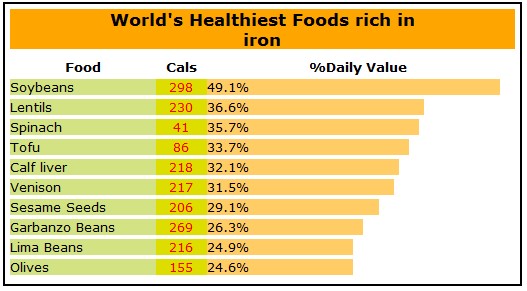
iron
14- WHAT FOODS PROVIDE IRON?
Excellent food sources of iron include asparagus, chard, spinach, thyme, turmeric and cumin seeds.
Very good sources of iron include romaine lettuce, blackstrap molasses, tofu, mustard greens, collard greens, turnip greens, leeks, oregano, and black pepper.
Good sources of iron include lentils, Brussel sprouts, venison, garbanzo beans, broccoli, kale, and scallops.
Very good sources of iron include romaine lettuce, blackstrap molasses, tofu, mustard greens, collard greens, turnip greens, leeks, oregano, and black pepper.
Good sources of iron include lentils, Brussel sprouts, venison, garbanzo beans, broccoli, kale, and scallops.
15- WHAT FOODS PROVIDE LIPOIC ACID?
Food sources of lipoic acid are not well researched. In general, however, two categories of lipoic acid-containing foods have been identified.
Green Plants: The first category includes green plants which have a high concentration of chloroplasts. Chloroplasts are key spots for energy production in plants, and they require lipoic acid for this activity. For this reason, broccoli, spinach, and other green leafy vegetables like collard greens or chard are food sources of lipoic acid.
Animal Foods: Animal foods constitute the second category of lipoic acid sources. Once again, the cell’s energy production mechanisms are involved. Mitochondria are critical energy production spots in animal as well as plant cells, and the main location for finding lipoic acid. Body tissues with lots of mitochondria (like the heart, liver, kidney, and skeletal muscle) are good spots for finding lipoic acid, so consumption of these foods (for example, calf’s liver or round steak) also provides lipoic acid. Yeast has also been shown to contain this vital nutrient.
Green Plants: The first category includes green plants which have a high concentration of chloroplasts. Chloroplasts are key spots for energy production in plants, and they require lipoic acid for this activity. For this reason, broccoli, spinach, and other green leafy vegetables like collard greens or chard are food sources of lipoic acid.
Animal Foods: Animal foods constitute the second category of lipoic acid sources. Once again, the cell’s energy production mechanisms are involved. Mitochondria are critical energy production spots in animal as well as plant cells, and the main location for finding lipoic acid. Body tissues with lots of mitochondria (like the heart, liver, kidney, and skeletal muscle) are good spots for finding lipoic acid, so consumption of these foods (for example, calf’s liver or round steak) also provides lipoic acid. Yeast has also been shown to contain this vital nutrient.
16- WHAT FOODS PROVIDE LYCOPENE?
Foods highest in lycopene include tomatoes, pink grapefruit, watermelon, and guava. Other foods containing small amounts of lycopene include persimmon and apricots.
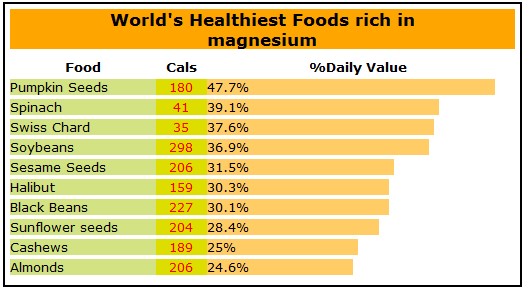
magnesium
17- WHAT FOODS PROVIDE MAGNESIUM?
Excellent sources of magnesium include Swiss chard and spinach.
Very good sources of magnesium include mustard greens, blackstrap molasses, halibut, turnip greens, pumpkin seeds, sea vegetables, green beans and collard greens.
There are numerous good sources of magnesium including cucumber, bell peppers, celery, kale, cantaloupe and a variety of seeds, including sunflower seeds, sesame seeds, and flaxseeds.
Very good sources of magnesium include mustard greens, blackstrap molasses, halibut, turnip greens, pumpkin seeds, sea vegetables, green beans and collard greens.
There are numerous good sources of magnesium including cucumber, bell peppers, celery, kale, cantaloupe and a variety of seeds, including sunflower seeds, sesame seeds, and flaxseeds.
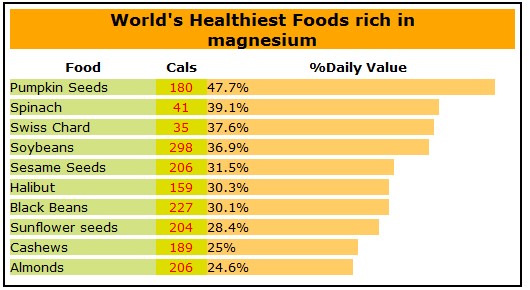
magnesium
18- WHAT FOODS PROVIDE MANGANESE?
Excellent food sources of manganese include mustard greens, kale, chard, raspberries, pineapple, strawberries, romaine lettuce, collard greens, spinach, garlic, summer squash, grapes, turnip greens, eggplant, brown rice, blackstrap molasses, maple syrup, cloves, cinnamon, thyme, black pepper, and turmeric.
Very good sources of manganese include leeks, tofu, broccoli, beets, cranberries, whole wheat, and tempeh.
Good sources of manganese include cucumber, peanuts, millet, barley, figs, bananas, kiwifruit, carrots, cashews, bell peppers, and onions.
Very good sources of manganese include leeks, tofu, broccoli, beets, cranberries, whole wheat, and tempeh.
Good sources of manganese include cucumber, peanuts, millet, barley, figs, bananas, kiwifruit, carrots, cashews, bell peppers, and onions.
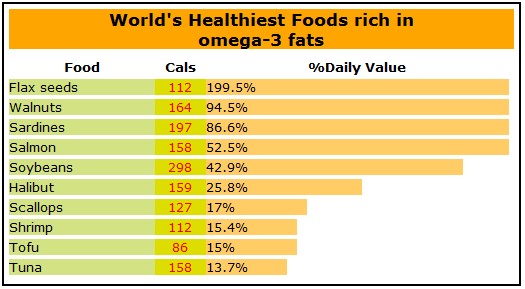
omega-3 fatty acids
19- WHAT FOODS PROVIDE OMEGA-3 FATTY ACIDS?
Sardines, flax seeds and walnuts are excellent sources of omega-3 fatty acids. Very good sources of these healthy fats include salmon and cloves. Good sources of these fats include halibut, shrimp, cod, tuna, soybeans, tofu, kale, collard greens, and winter squash.
Studies have proven that a relatively small number of omega-3 food sources can have a measurable impact on your blood levels of omega-3s, including those two key omega-3 fatty acids, EPA (eicosaenoic acid) and DHA (docosahexaenoic acid). For example, two weekly servings of a non-fried, omega-3 containing fish (like wild-caught Pacific salmon) is enough to boost your blood levels of omega-3s.
Studies have proven that a relatively small number of omega-3 food sources can have a measurable impact on your blood levels of omega-3s, including those two key omega-3 fatty acids, EPA (eicosaenoic acid) and DHA (docosahexaenoic acid). For example, two weekly servings of a non-fried, omega-3 containing fish (like wild-caught Pacific salmon) is enough to boost your blood levels of omega-3s.
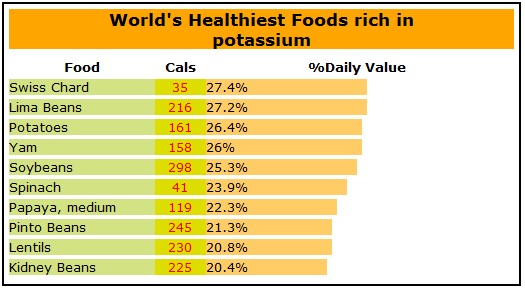
potassium
20- WHAT FOODS PROVIDE POTASSIUM?
Potassium is found in abundance in many foods, and is especially easy to obtain in fruits and vegetables. Excellent sources of potassium include chard, crimini mushrooms, and spinach.
Very good sources of potassium include fennel, kale, mustard greens, Brussel sprouts, broccoli, winter squash, blackstrap molasses, eggplant, bell pepper,cantaloupe, tomatoes, summer squash, celery, romaine lettuce, cauliflower, turnip greens, asparagus, shiitake mushrooms, kale, carrots, beets, green beans, and papaya.
Good sources of potassium include cucumber,turmeric, apricots, ginger root, strawberries, avocado, banana, tuna, halibut, and cabbage.
Very good sources of potassium include fennel, kale, mustard greens, Brussel sprouts, broccoli, winter squash, blackstrap molasses, eggplant, bell pepper,cantaloupe, tomatoes, summer squash, celery, romaine lettuce, cauliflower, turnip greens, asparagus, shiitake mushrooms, kale, carrots, beets, green beans, and papaya.
Good sources of potassium include cucumber,turmeric, apricots, ginger root, strawberries, avocado, banana, tuna, halibut, and cabbage.
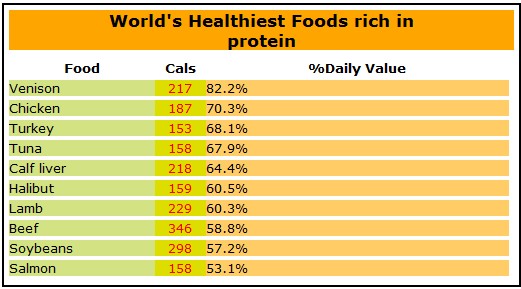
protein
21- WHAT FOODS PROVIDE PROTEIN?
Excellent sources of protein include turkey, tuna, shrimp, turkey, cod, and venison.
Very good sources of protein include snapper, halibut, salmon, scallops, sardines, chicken, lamb, beef, calf’s liver, spinach, tofu, mustard greens, crimini mushrooms, asparagus, soybeans, and mozarrella cheese.
Good sources of protein include eggs, summer squash,collard greens, cauliflower and many legumes including lentils, split peas, kidney beans, black beans, pinto beans and garbanzo beans.
When discussing food sources of protein, nutritionists often speak in terms of “complete” and “incomplete” proteins. Foods that provide complete protein are those that include all of the essential amino acid, while foods that provide some or none of the essential amino acids are said to be incomplete.
Eggs, dairy foods, meat, fish and poultry are typically considered to be complete proteins. Vegetarians, and especially vegans, often do not have a source of complete protein in their diets, but can easily obtain all of the essential amino acids by eating a variety of beans, grains, nuts, seeds, and vegetables.
Very good sources of protein include snapper, halibut, salmon, scallops, sardines, chicken, lamb, beef, calf’s liver, spinach, tofu, mustard greens, crimini mushrooms, asparagus, soybeans, and mozarrella cheese.
Good sources of protein include eggs, summer squash,collard greens, cauliflower and many legumes including lentils, split peas, kidney beans, black beans, pinto beans and garbanzo beans.
When discussing food sources of protein, nutritionists often speak in terms of “complete” and “incomplete” proteins. Foods that provide complete protein are those that include all of the essential amino acid, while foods that provide some or none of the essential amino acids are said to be incomplete.
Eggs, dairy foods, meat, fish and poultry are typically considered to be complete proteins. Vegetarians, and especially vegans, often do not have a source of complete protein in their diets, but can easily obtain all of the essential amino acids by eating a variety of beans, grains, nuts, seeds, and vegetables.
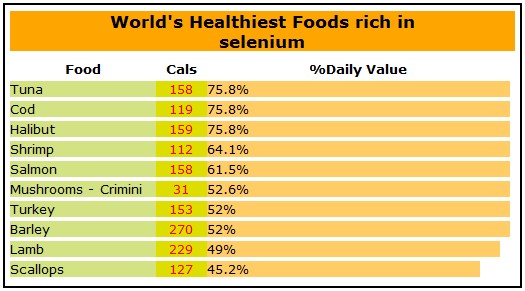
selenium
22- WHAT FOODS PROVIDE SELENIUM?
It is important to remember that the selenium content of food is highly variable because it depends so heavily on soil conditions. In fact, some researchers have concluded that it is not possible to create a valid list of foods and their selenium content for this very reason. While soil conditions affect plant foods most directly, they also affect animal foods, since most animals depend upon plants for their diet.
Grown or raised under ideal soil conditions, crimini mushrooms, cod, shrimp, tuna, halibut, and mustard seeds are also excellent sources of selenium.
Very good sources of selenium include salmon, scallops, chicken, eggs, shiitake mushrooms, lamb, barley, and turkey.
Grown or raised under ideal soil conditions, crimini mushrooms, cod, shrimp, tuna, halibut, and mustard seeds are also excellent sources of selenium.
Very good sources of selenium include salmon, scallops, chicken, eggs, shiitake mushrooms, lamb, barley, and turkey.
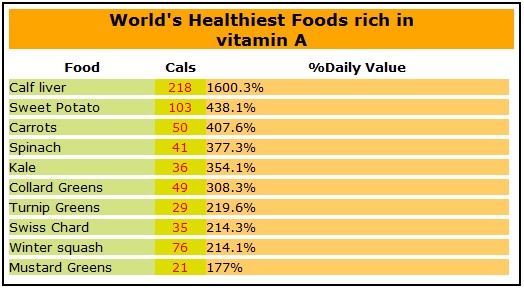
vitamin A
23- WHAT FOODS PROVIDE VITAMIN A & CAROTENOIDS & ALPHA-CAROTENE & BETA-CAROTENE & BETA-CRYPTOXANTHIN?
Calf liver is an excellent source of preformed vitamin A.
For a list of plant foods with vitamin A activity,
What foods provide carotenoids?
The orange-colored fruits and vegetables including carrots, apricots, mangoes, squash, papaya, and sweet potatoes contain significant amounts of beta-carotene, alpha-carotene, and beta-cryptoxanthin.
Green vegetables, especially spinach, kale, and collard greens, also contain beta-carotene, and are the best sources of lutein.
Lycopene is found in tomatoes, guava, and pink grapefruit. Salmon, shellfish, milk, and egg yolks also provide carotenoids.
The contribution of spices to available carotenoids in the U.S. diet has increased steadily, making spices a great choice for upping your carotenoid intake. Cayenne pepper and chili pepper are worthy of special mention here.
What foods provide alpha-carotene?
Alpha-carotene can be found in concentrated amounts in a variety of foods including sweet potatoes, carrots, kale, spinach, turnip greens, winter squash, collard greens, cilantro, fresh thyme, cantaloupe, romaine lettuce and broccoli. carrots, winter squash, tomatoes, green beans, cilantro, Swiss chard, apples, avocadoes and cantaloupe
What foods provide beta-carotene?
Beta-carotene can be found in concentrated amounts in a variety of foods including sweet potatoes, carrots, kale, spinach, turnip greens, winter squash, collard greens, cilantro, fresh thyme, cantaloupe, romaine lettuce and broccoli.
What foods provide beta-cryptoxanthin?
Food sources of beta-cryptoxanthin include red bell peppers, papaya, cilantro, oranges, corn, watermelon, serrano pepper, avocadoes, and grapefruit.
For a list of plant foods with vitamin A activity,
What foods provide carotenoids?
The orange-colored fruits and vegetables including carrots, apricots, mangoes, squash, papaya, and sweet potatoes contain significant amounts of beta-carotene, alpha-carotene, and beta-cryptoxanthin.
Green vegetables, especially spinach, kale, and collard greens, also contain beta-carotene, and are the best sources of lutein.
Lycopene is found in tomatoes, guava, and pink grapefruit. Salmon, shellfish, milk, and egg yolks also provide carotenoids.
The contribution of spices to available carotenoids in the U.S. diet has increased steadily, making spices a great choice for upping your carotenoid intake. Cayenne pepper and chili pepper are worthy of special mention here.
What foods provide alpha-carotene?
Alpha-carotene can be found in concentrated amounts in a variety of foods including sweet potatoes, carrots, kale, spinach, turnip greens, winter squash, collard greens, cilantro, fresh thyme, cantaloupe, romaine lettuce and broccoli. carrots, winter squash, tomatoes, green beans, cilantro, Swiss chard, apples, avocadoes and cantaloupe
What foods provide beta-carotene?
Beta-carotene can be found in concentrated amounts in a variety of foods including sweet potatoes, carrots, kale, spinach, turnip greens, winter squash, collard greens, cilantro, fresh thyme, cantaloupe, romaine lettuce and broccoli.
What foods provide beta-cryptoxanthin?
Food sources of beta-cryptoxanthin include red bell peppers, papaya, cilantro, oranges, corn, watermelon, serrano pepper, avocadoes, and grapefruit.
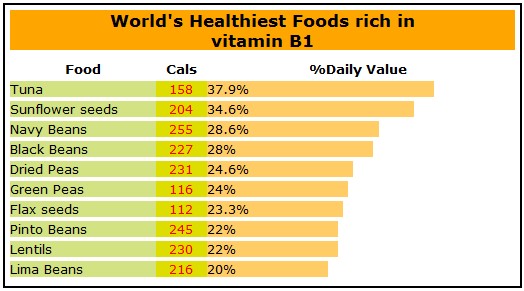
thiamin-B1
24- WHAT FOODS PROVIDE VITAMIN B1?
Asparagus is an excellent source of vitamin B1. Very good sources of vitamin B1 include crimini mushrooms, spinach, flaxseeds, tuna, green peas, and Brussels sprouts.
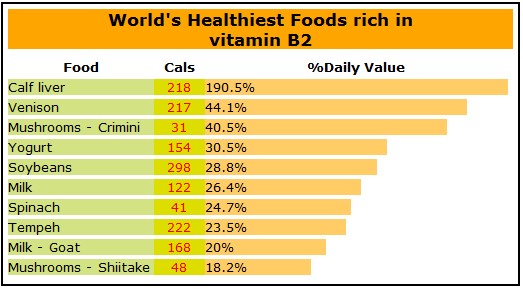
riboflavin-B2
25- WHAT FOODS PROVIDE VITAMIN B2?
Excellent sources of vitamin B2 include crimini mushrooms, and calf liver, spinach.
Very good sources include summer squash, asparagus, chard, shiitake mushrooms, green beans, mustard greens, broccoli, collard greens, venison, turnip greens, eggs, yogurt, and cow’s milk.
Very good sources include summer squash, asparagus, chard, shiitake mushrooms, green beans, mustard greens, broccoli, collard greens, venison, turnip greens, eggs, yogurt, and cow’s milk.
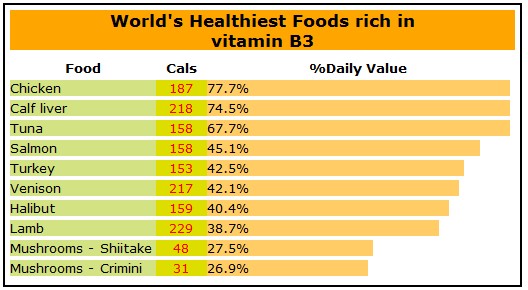
niacin-B3
26- WHAT FOODS PROVIDE VITAMIN B3?
Excellent sources of vitamin B3 (niacin) include crimini mushrooms, shiitake mushrooms, chicken, and tuna. Very good sources include salmon, chicken breast, asparagus, halibut, venison, calf’s liver, and turkey.
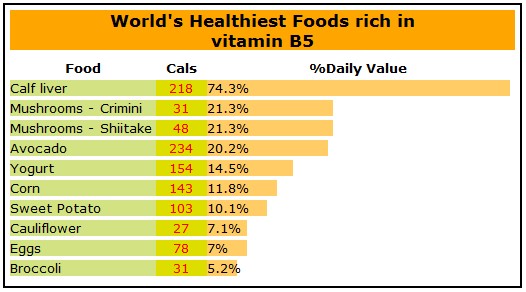
pantothenic acid - B5
27- WHAT FOODS PROVIDE VITAMIN B5?
Excellent sources of vitamin B5 include crimini and shiitake mushrooms.
Very good sources of vitamin B5 include calf’s liver and cauliflower.
Good sources of vitamin B5 include cucumber, avocado, asparagus, broccoli, celery, turnip greens, tomato, yogurt, eggs, sweet potato, collard greens, chard, bell peppers, and corn.
Very good sources of vitamin B5 include calf’s liver and cauliflower.
Good sources of vitamin B5 include cucumber, avocado, asparagus, broccoli, celery, turnip greens, tomato, yogurt, eggs, sweet potato, collard greens, chard, bell peppers, and corn.
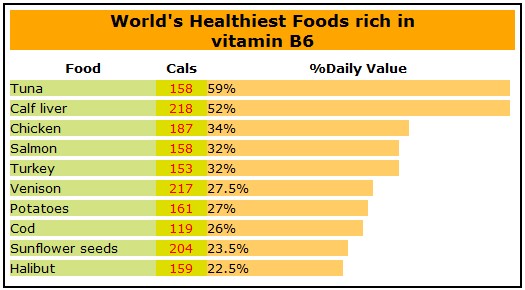
vitamin B6
28- WHAT FOODS PROVIDE VITAMIN B6?
Excellent sources of vitamin B6 include summer squash, bell peppers, turnip greens, shiitake mushrooms, and spinach.
Very good food sources of vitamin B6 include garlic, tuna, cauliflower, mustard greens, cabbage, crimini mushrooms, asparagus, broccoli, kale, collard greens, Brussels sprouts, cod, chard, calf’s liver, green beans, winter squash, tomatoes, turkey, salmon, and leeks.
Very good food sources of vitamin B6 include garlic, tuna, cauliflower, mustard greens, cabbage, crimini mushrooms, asparagus, broccoli, kale, collard greens, Brussels sprouts, cod, chard, calf’s liver, green beans, winter squash, tomatoes, turkey, salmon, and leeks.
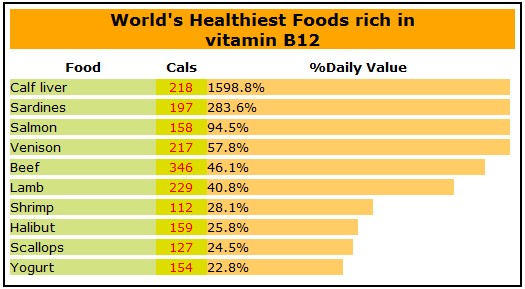
vitamin B12
29- WHAT FOODS PROVIDE VITAMIN B12?
Since vitamin B12 cannot be made by any animals or plants, the B12 content of animals and plants depends on their ability to store the vitamin and their relationship to microorganisms (like bacteria in the soil). Because of their greater ability to store vitamin B12, animals contain more of the vitamin than plants. Excellent sources of vitamin B12 are therefore limited to animal foods. These foods include snapper and calf’s liver. Very good sources of vitamin B12 include venison, shrimp, scallops, and salmon. Within the plant world, sea plants (like kelp), algaes (like blue-green algae), yeasts (like brewer’s yeast), and fermented plant foods (like tempeh, miso, or tofu) are the most commonly consumed food sources of vitamin B12, although none of these plant foods can be counted on to be a consistently excellent or very good source of the vitamin.
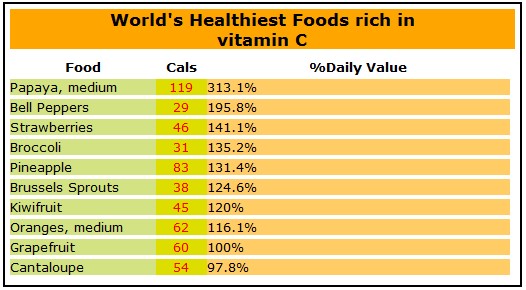
vitamin C
30- WHAT FOODS PROVIDE VITAMIN C?
Excellent food sources of vitamin C include broccoli, bell peppers, parsley, Brussels sprouts, cauliflower, lemon juice, strawberries, mustard greens, kiwifruit, papaya, kale, cabbage, romaine lettuce, turnip greens, oranges, cantaloupe, summer squash, grapefruit, pineapple, chard, tomatoes, collard greens, raspberries, spinach, green beans, fennel, cranberries, asparagus, watermelon, and winter squash.
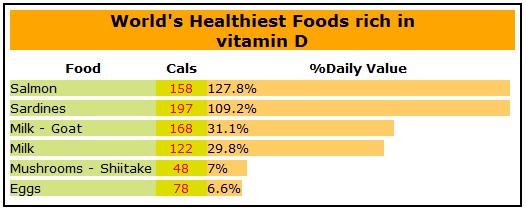
vitamin D
31- WHAT FOODS PROVIDE VITAMIN D?
Excellent sources of vitamin D include salmon and sardines while very good sources include vitamin-D fortified milk.
Good food sources of vitamin D include goat’s milk, shiitake mushrooms, and eggs.
Good food sources of vitamin D include goat’s milk, shiitake mushrooms, and eggs.
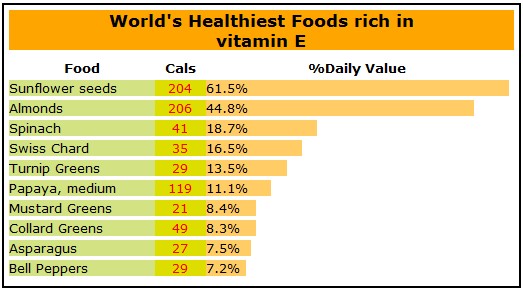
vitamin E
32- WHAT FOODS PROVIDE VITAMIN E?
Excellent sources of vitamin E include spinach, turnip greens, and chard.
Very good sources of vitamin E include mustard greens, cayenne pepper, sunflower seeds, almonds, bell peppers, and asparagus.
Good sources of vitamin E include collard greens, kale, tomatoes, cranberries, broccoli, Brussels sprouts, papaya, raspberries, and carrots.
Very good sources of vitamin E include mustard greens, cayenne pepper, sunflower seeds, almonds, bell peppers, and asparagus.
Good sources of vitamin E include collard greens, kale, tomatoes, cranberries, broccoli, Brussels sprouts, papaya, raspberries, and carrots.
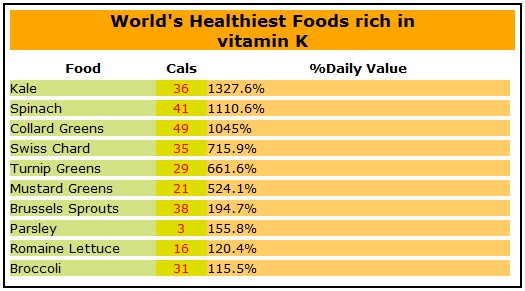
vitamin K
33- WHAT FOODS PROVIDE VITAMIN K?
Excellent sources of vitamin K include parsley, kale, spinach, Brussels sprouts, Swiss chard, green beans, asparagus, broccoli, kale, mustard greens, turnip greens, collard greens, thyme, romaine lettuce, sage, oregano, cabbage, celery, sea vegetables, cucumber, leeks, cauliflower, tomatoes, and blueberries.
Fermentation of foods can be especially helpful for increasing their vitamin K content. One widely-enjoyed food that can be fermented in a way that increases its vitamin K content is cheese. Swiss Emmental cheese and Norwegian Jarlsberg cheeses are examples of cheeses fermented by bacteria called Proprionibacterium. These bacteria can make large amounts of vitamin K in the form of menaquinone 9(H4), or MK-9(H4). (MK-9(H4), like all menaquinones, is a K2 form of the vitamin.)
Fermentation of foods can be especially helpful for increasing their vitamin K content. One widely-enjoyed food that can be fermented in a way that increases its vitamin K content is cheese. Swiss Emmental cheese and Norwegian Jarlsberg cheeses are examples of cheeses fermented by bacteria called Proprionibacterium. These bacteria can make large amounts of vitamin K in the form of menaquinone 9(H4), or MK-9(H4). (MK-9(H4), like all menaquinones, is a K2 form of the vitamin.)
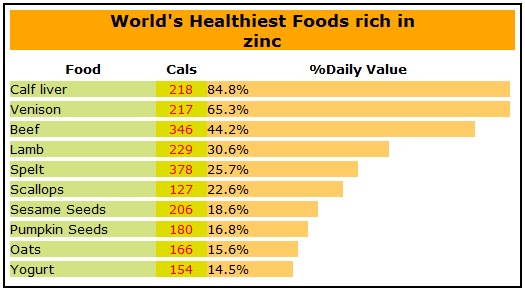
zinc
34- WHAT FOODS PROVIDE ZINC?
Calf’s liver is an excellent source of zinc. Crimini mushrooms, shiitake mushrooms, spinach, and venison are very good sources of zinc.
Good sources include asparagus, chard, scallops, lamb, beef, maple syrup, shrimp, green peas, yogurt, oats, pumpkin seeds, sesame seeds, turkey, miso, and spelt.
Good sources include asparagus, chard, scallops, lamb, beef, maple syrup, shrimp, green peas, yogurt, oats, pumpkin seeds, sesame seeds, turkey, miso, and spelt.
Source: All the information here are complied from different pages from an excellent website WHFoods. Many thanks for their wonderful services and for their book The World’s Healthiest Foods by George Mateljan.
Comments
Post a Comment